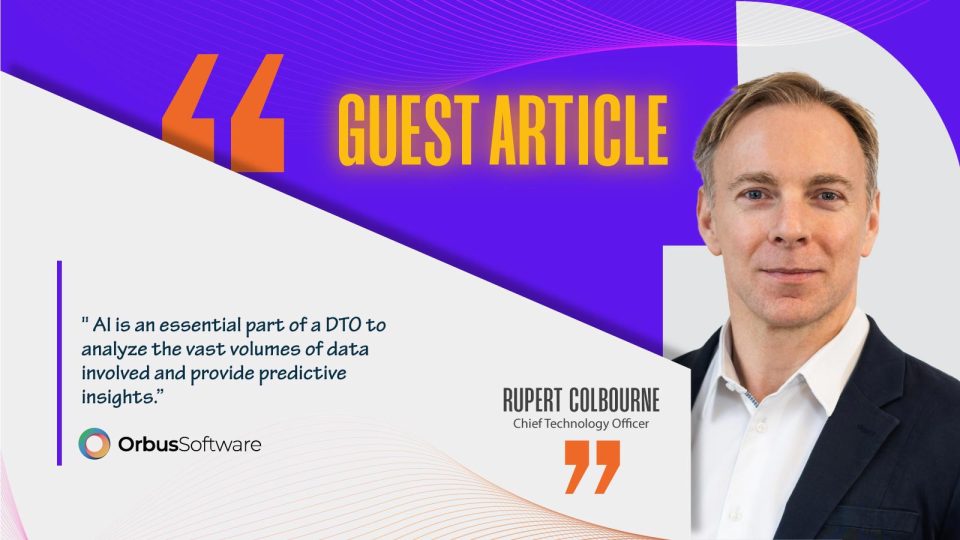Digital twin technology is well established in helping transform how physical products like spacecraft, airplanes, and vehicles are designed, built, and maintained. The virtual model allows manufacturers to predict and run scenarios to understand how to optimize the design, production, operation, and maintenance of physical assets. This ensures issues are identified prior to going into production, saving valuable time and money, and these benefits are driving the digital twin market to reach $110 billion by 2028.
With companies facing increasing pressure to accelerate transformation efforts in order to compete, they need a way to gather forensic insights across their operations. As a result, digital twin capabilities are now being directed at companies, giving rise to a “digital twin of an organization” (DTO). The DTO combines process mining, enterprise architecture and business performance to deliver these observations. This virtual avatar of an enterprise uses real-time data, including business processes, goals, and previous performance. The solution incorporates task mining and advanced analytics to continuously update the virtual model, which is derived from enterprise architecture with real-time data, providing a holistic and dynamic view. AI is an essential part of a DTO to analyze the vast volumes of data involved and provide predictive insights. The simulation enables a company to gain visibility, enhance efficiency, manage risks, and drive data-driven decision-making for improved competitiveness.
Also Read: The Role of Cyber Insurance in Mitigating Financial Risks from Cyber Threats
The strategic insights provided by a DTO are not part of established performance management and business intelligence processes. Instead, the model creates new insights by correlating across the entire organization, unlike established dashboarding solutions that focus on a specific function. By integrating a DTO, a company gains visibility into the end-to-end operations, helping it model and understand the impact of new initiatives. This is far superior to legacy approaches that rely on static architecture models. This clarity aids transformation efforts-for example, it enables an enterprise to understand how technical debt or application integration complexity impacts enterprise risk and resilience.
There are several key benefits of deploying a DTO, including:
- Improves Decision-Making
The dynamic model enables you to analyze and predict the outcomes of strategies, choices, and changes before implementing them. This allows enterprises to refine and optimize the approach in pursuit of their objectives. For example, if a company is looking to drive efficiencies and reduce costs, the DTO helps identify how to best achieve this by simulating the impact of various strategic decisions. The visibility and insights the model provides bolster decision-making and reduce risk.
- Increases Agility
Speed and agility are enterprise imperatives, and a DTO supports both. The real-time visibility and predictive insights from scenario planning enable companies to understand and mitigate issues before implementing a strategic initiative. The ability to easily understand and adapt to change aids transformation. For example, Walmart integrated a DTO to optimize its supply chain. The model identified bottlenecks, inefficiencies, and areas for improvement, enabling the retailer to reduce lead times and stockouts and adapt to changing customer demands and market conditions.
- Enhances Sustainability
The ability to model and understand the impact of operational and technical decisions allows organizations to optimize resource usage and reduce carbon emissions in support of net-zero goals. The DTO helps businesses see how the entire ecosystem will be impacted, enabling them to implement sustainable practices that reduce their environmental footprint. The improved situational awareness of cause and effect supports more agile and sustainable decision-making.
Also Read: Top 5 Cloud Trends for CIOs in 2024
Building Blocks
With technology central to success, a DTO provides unprecedented insights into an organization’s operations, processes, and performance by creating a dynamic, digital replica. By combining enterprise architecture, process mining and business performance the DTO enables risk assessments, employee training, and optimization of processes, products, or services in a virtual environment before implementing changes in the real world. As enterprises struggle with complexity, a DTO provides a way to navigate the intricacies and interdependencies to understand how new transformation efforts will impact the business. With the imperative to be more agile and competitive, a DTO will increasingly become a foundational element upon which to build.
[To share your insights with us as part of editorial or sponsored content, please write to psen@itechseries.com]


